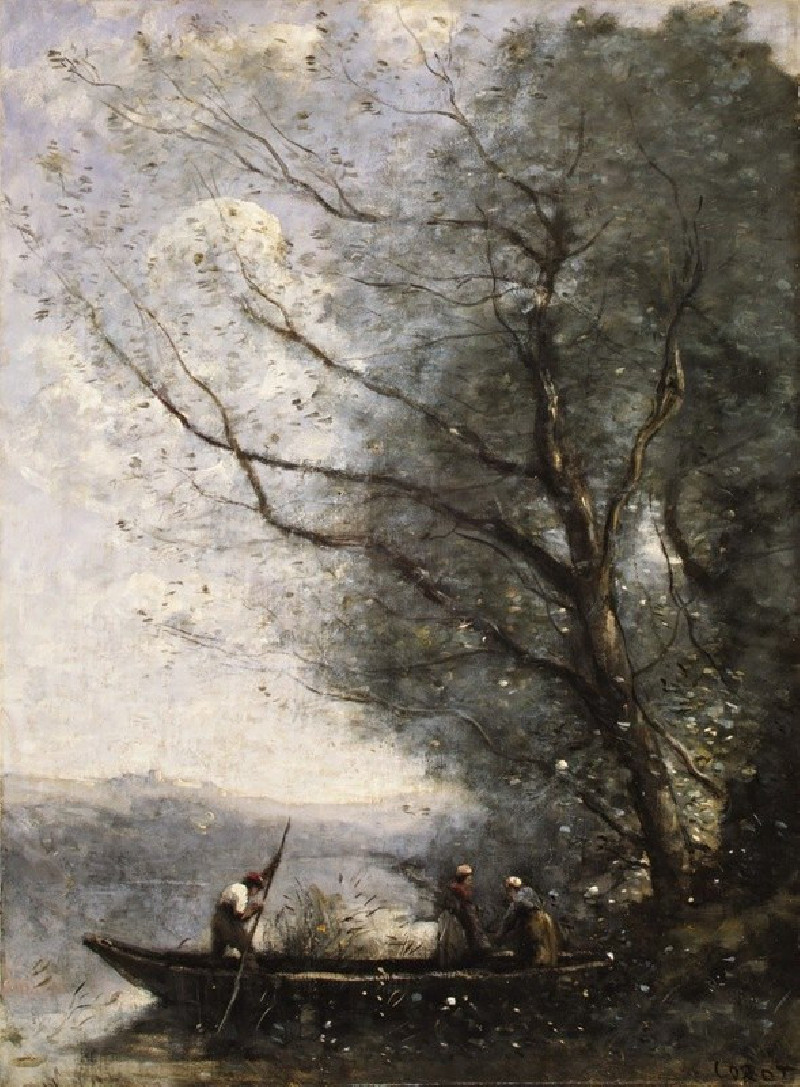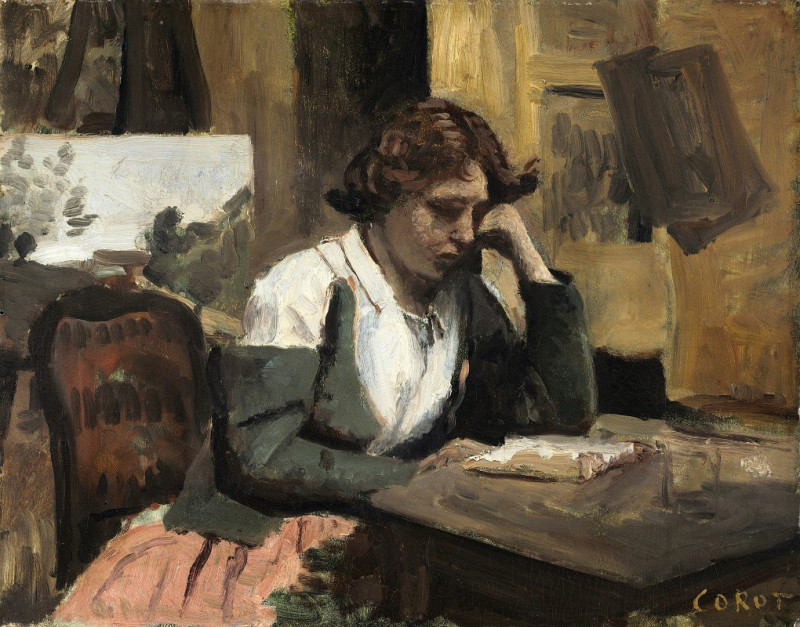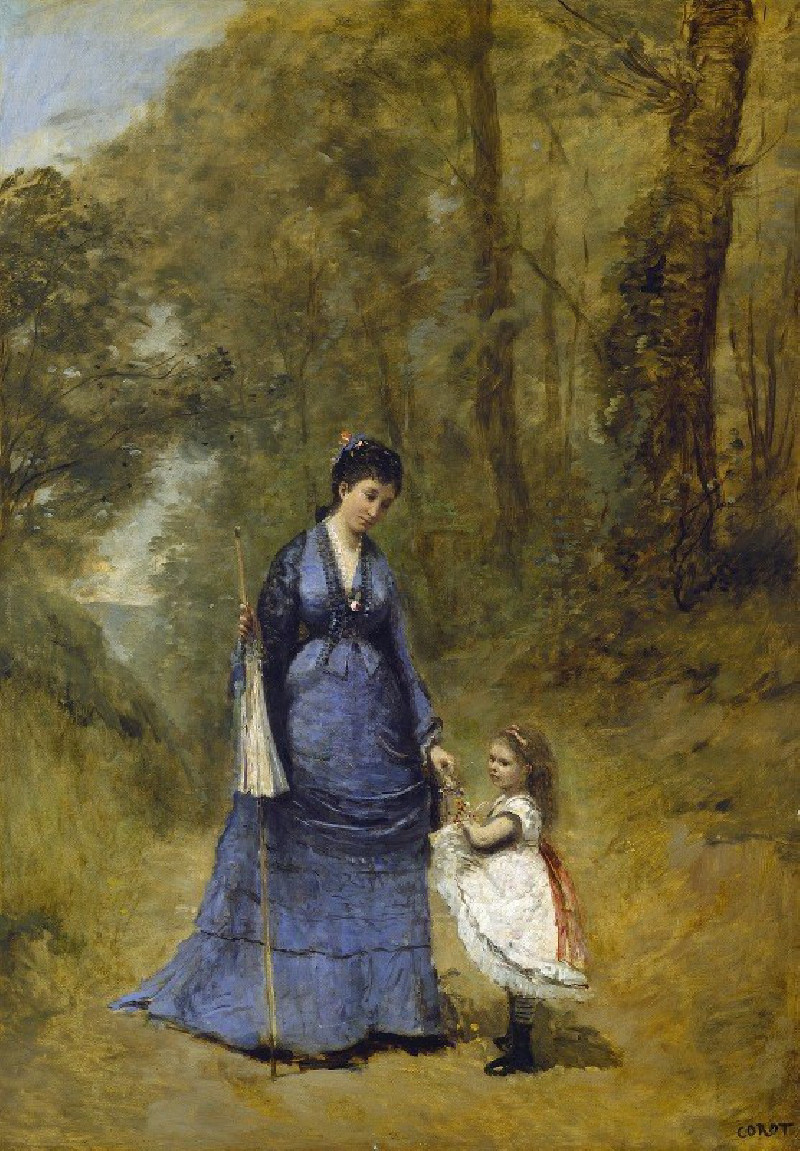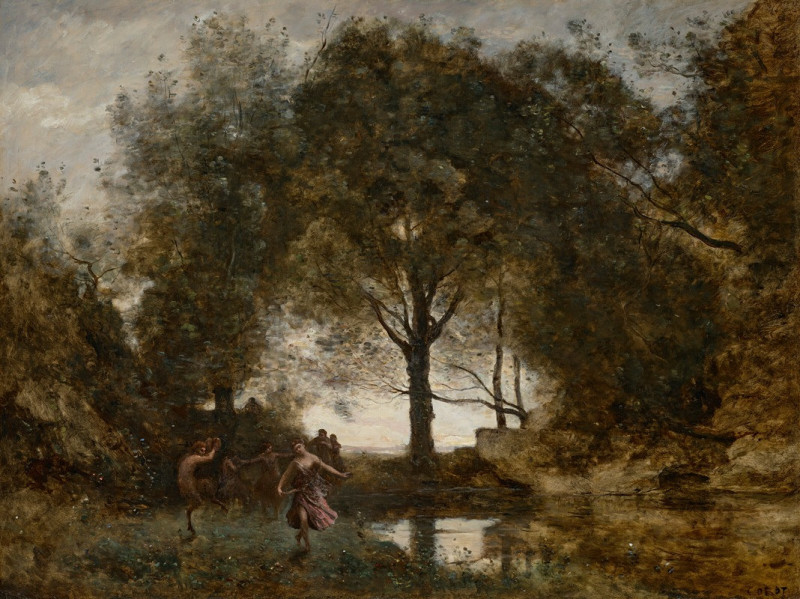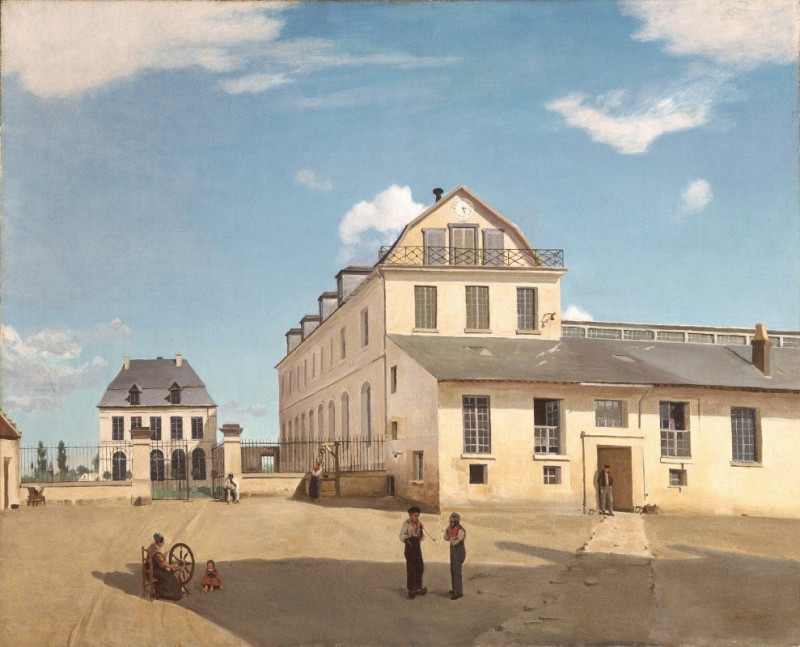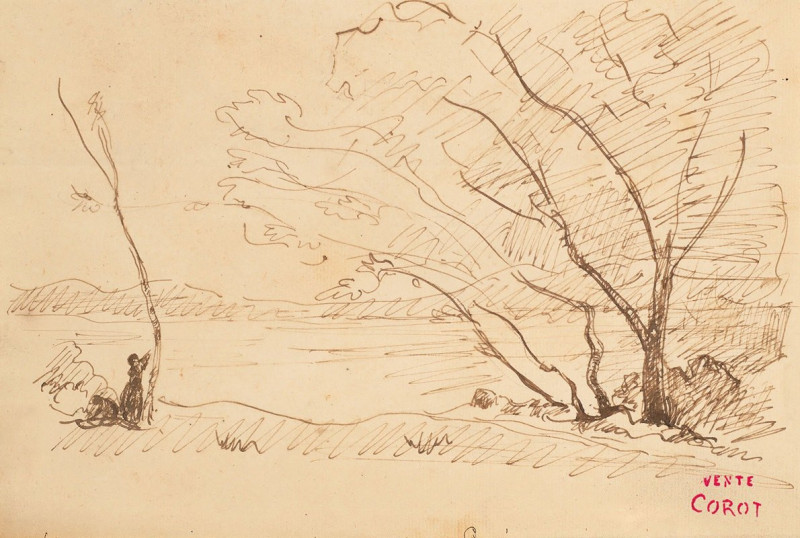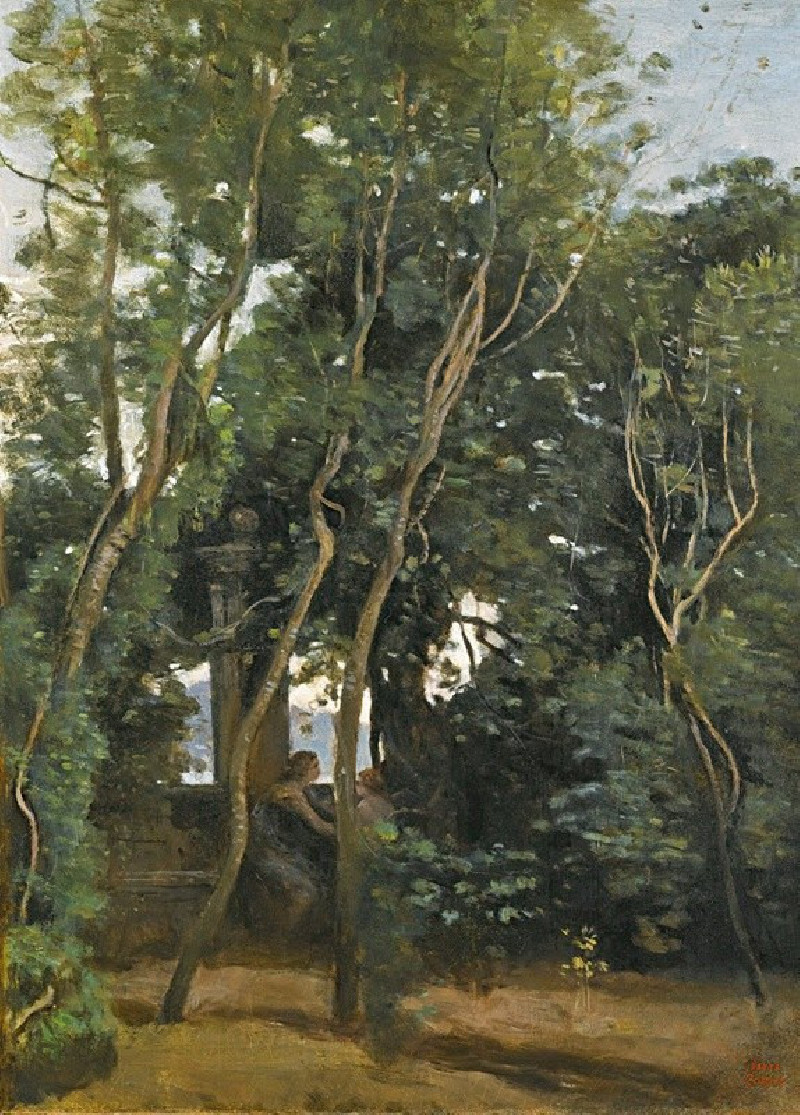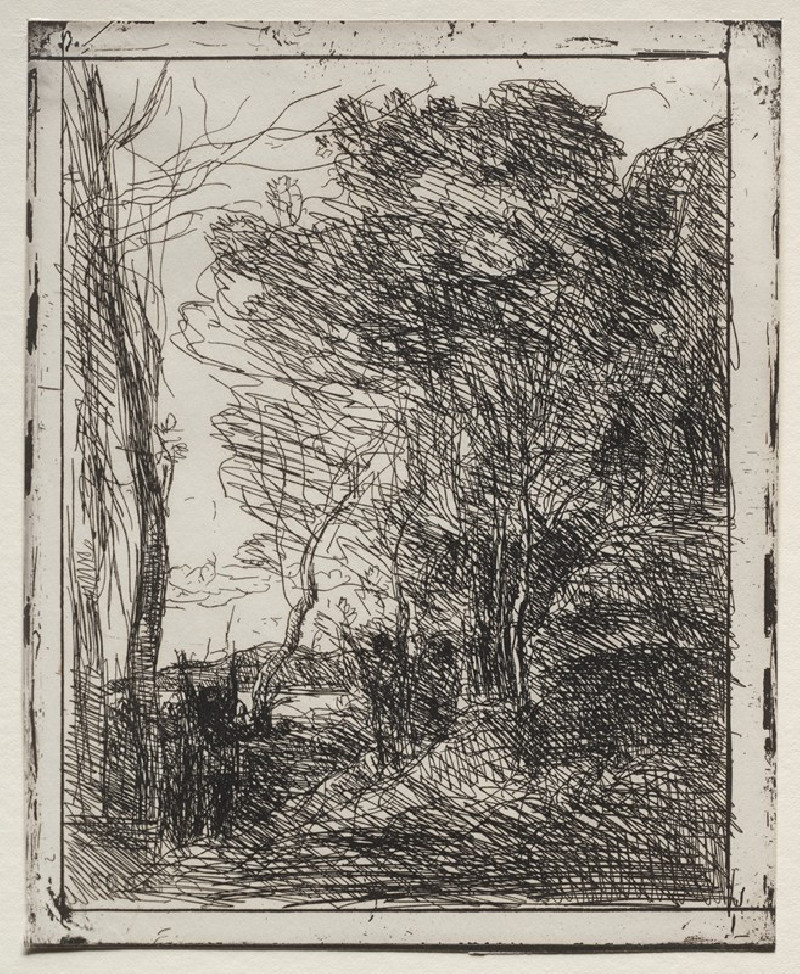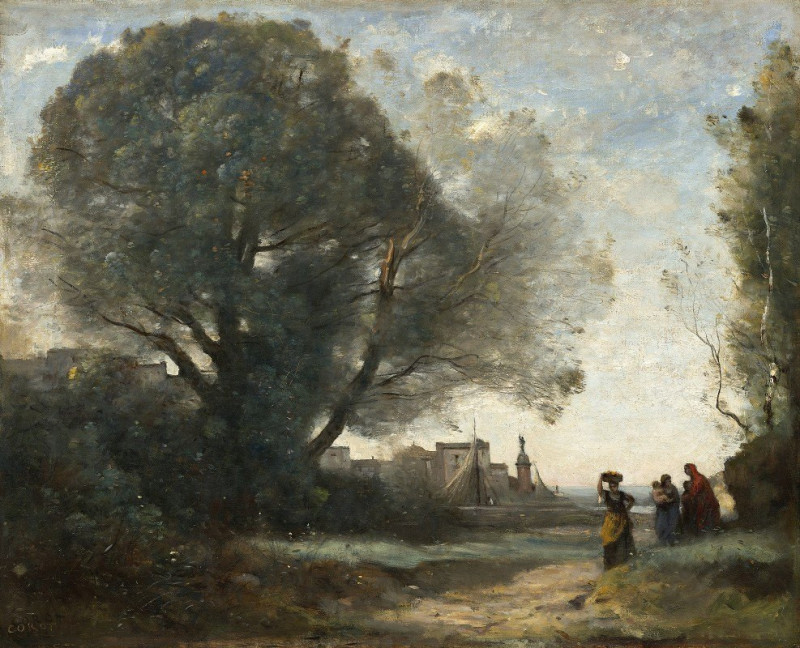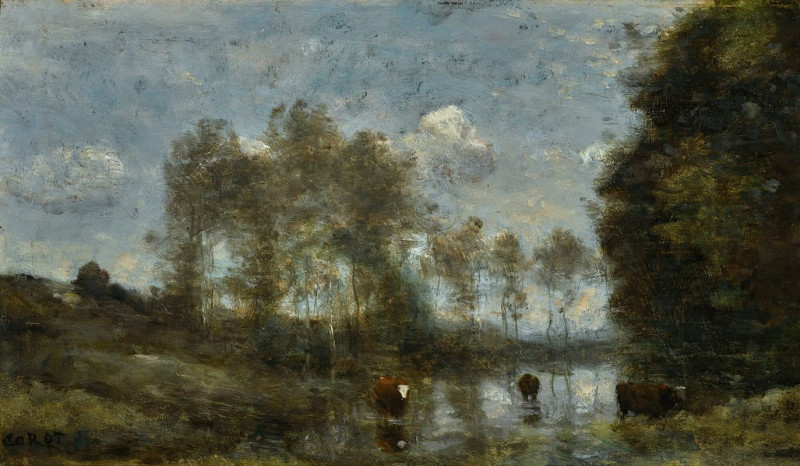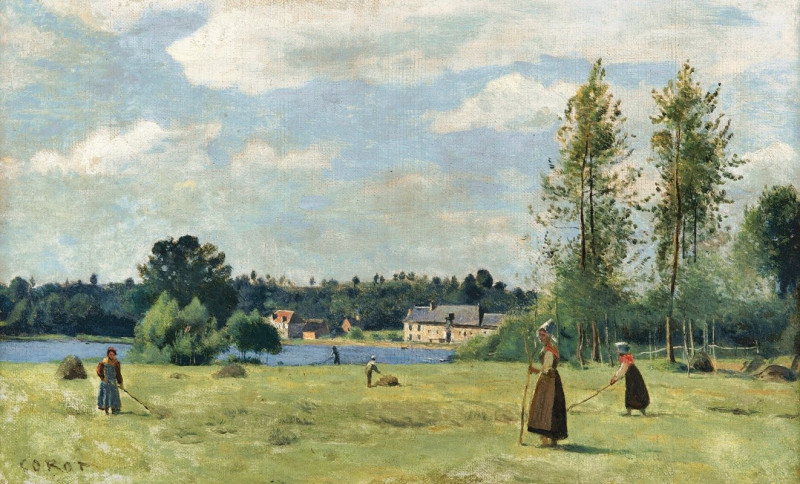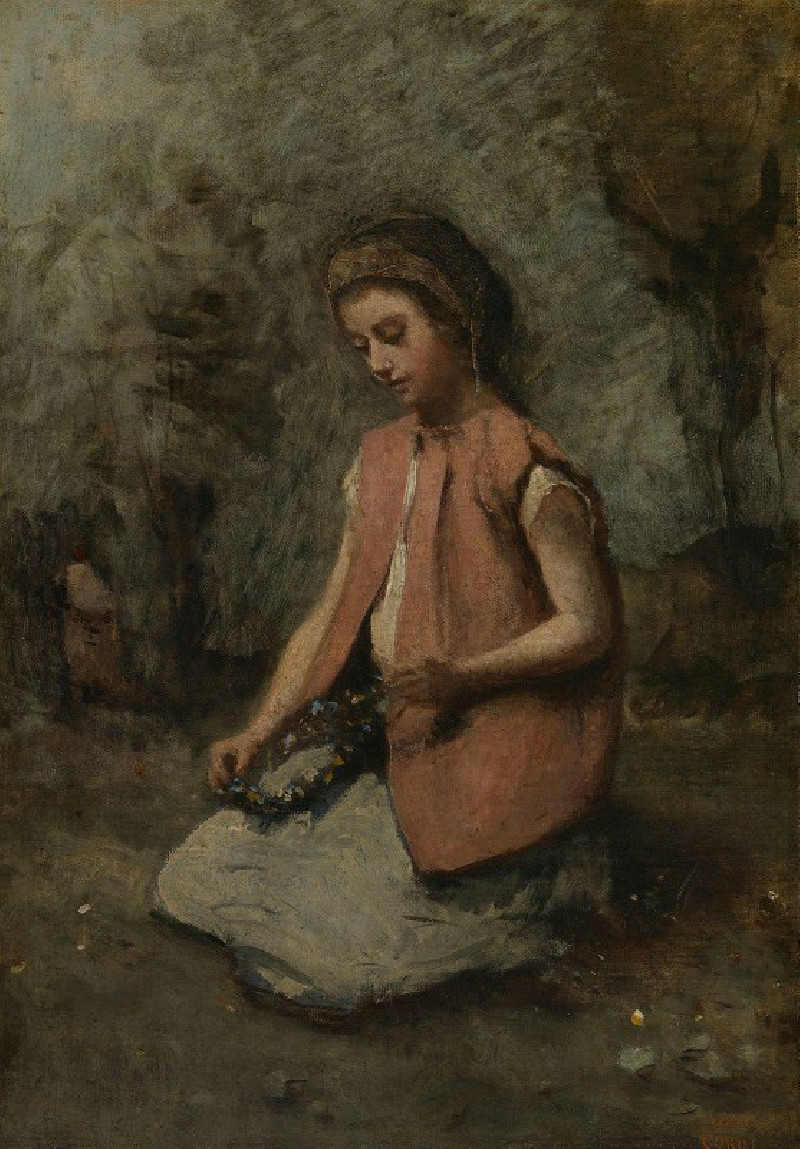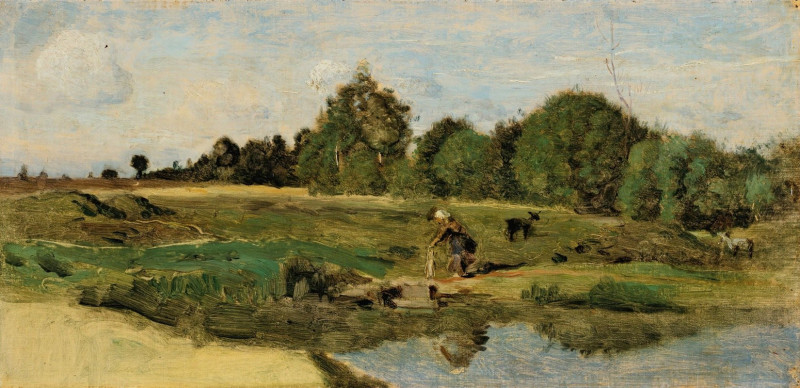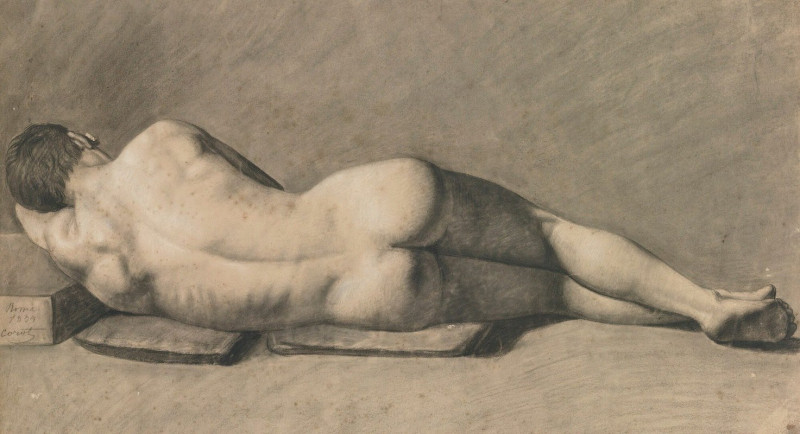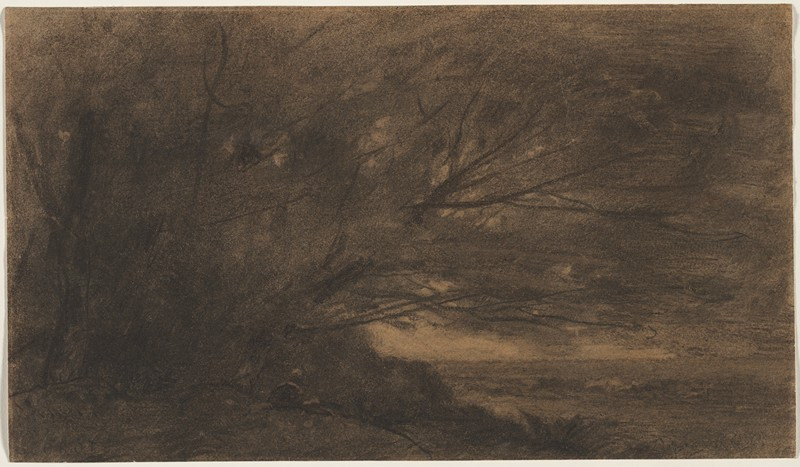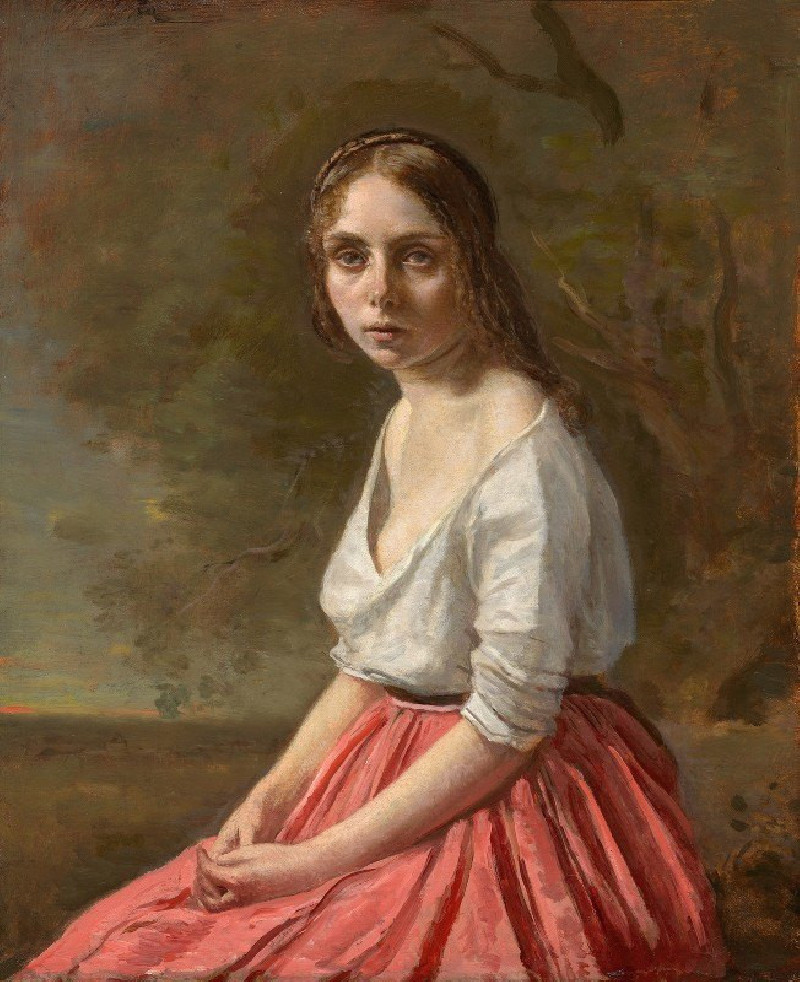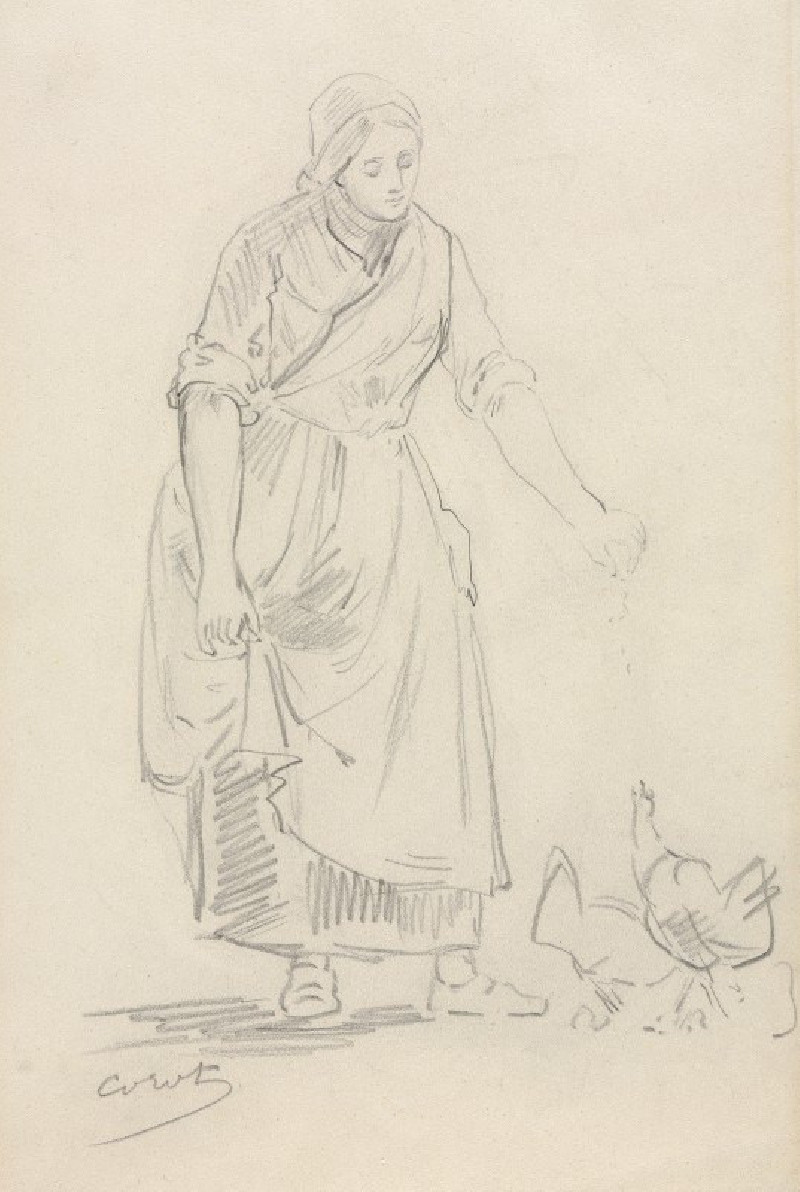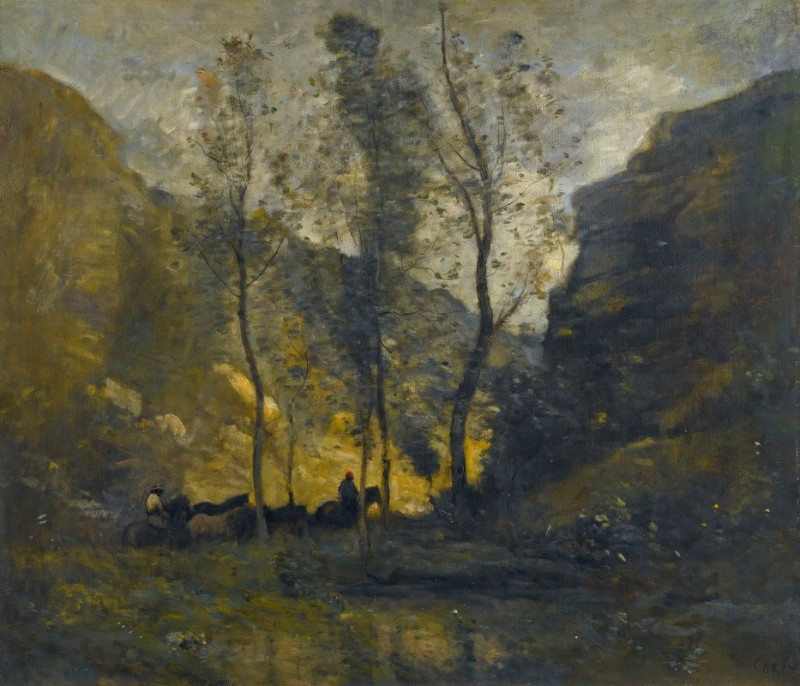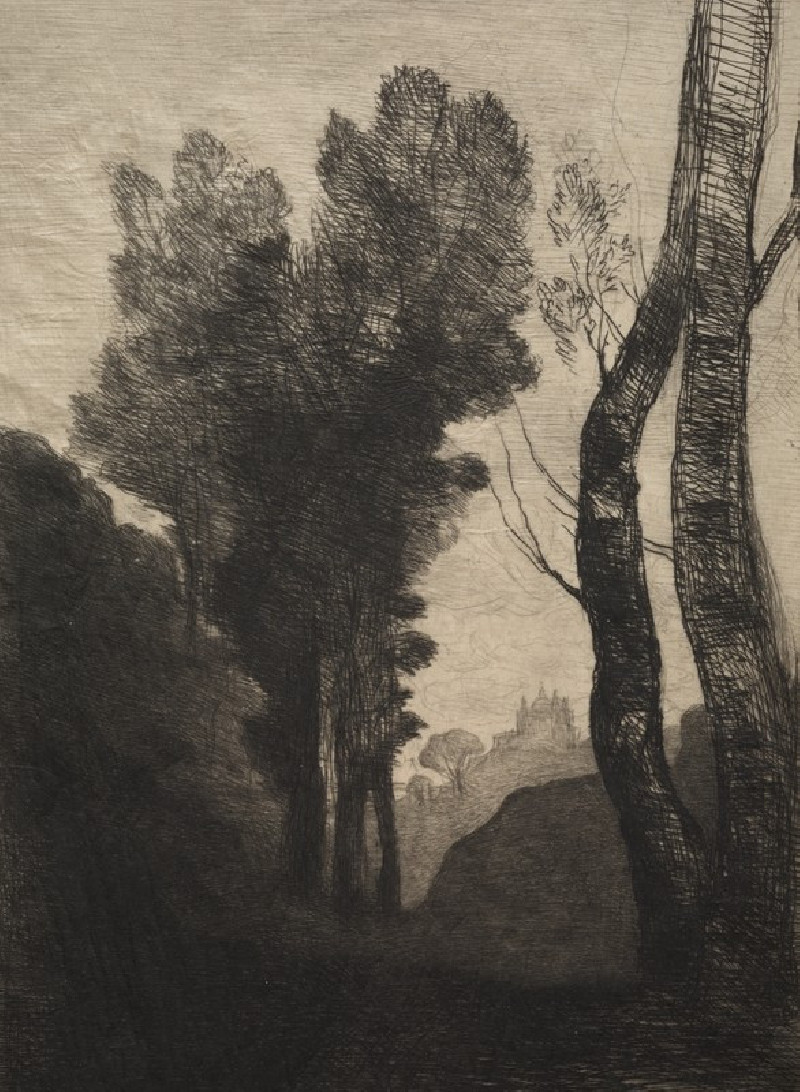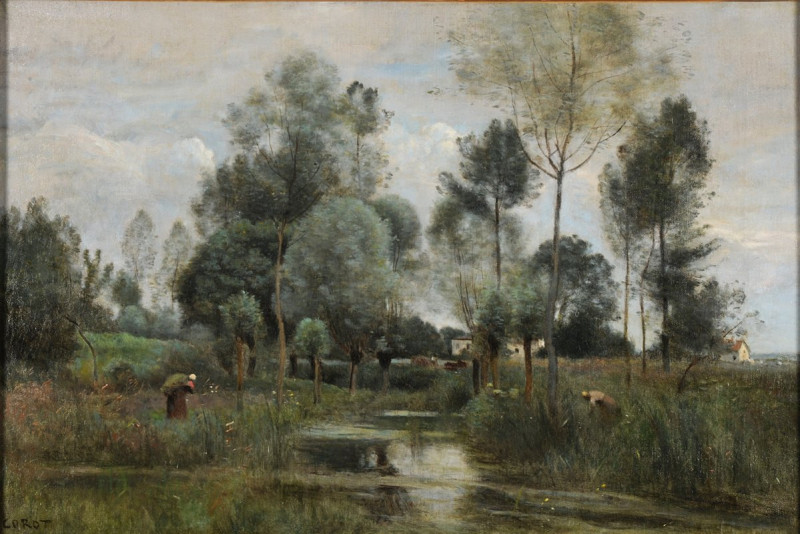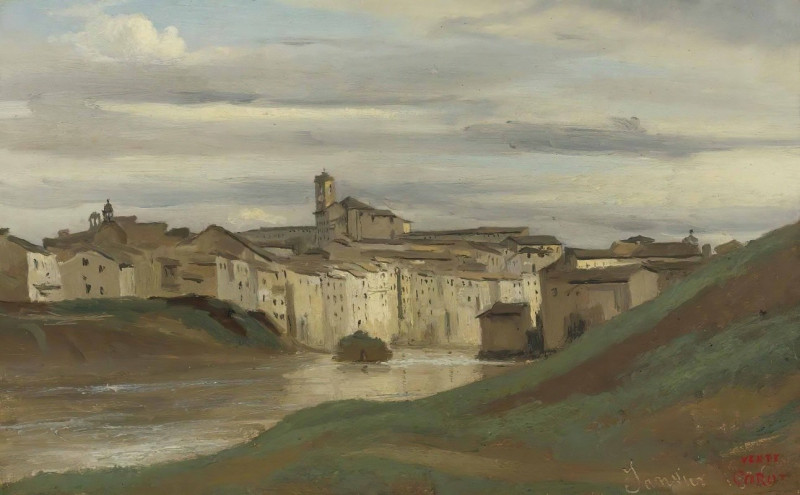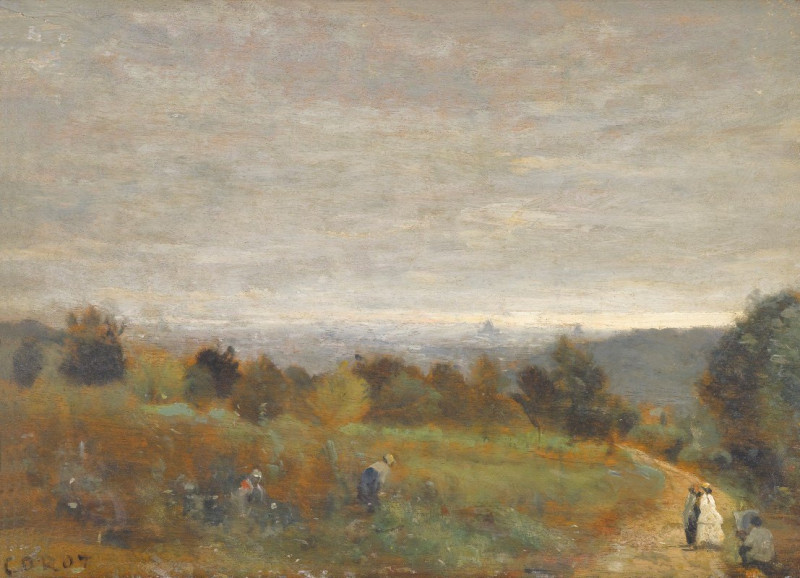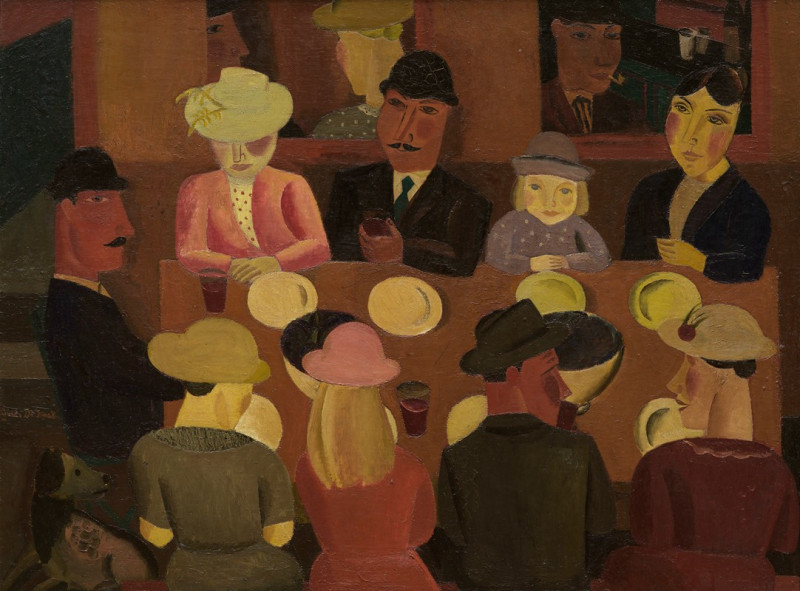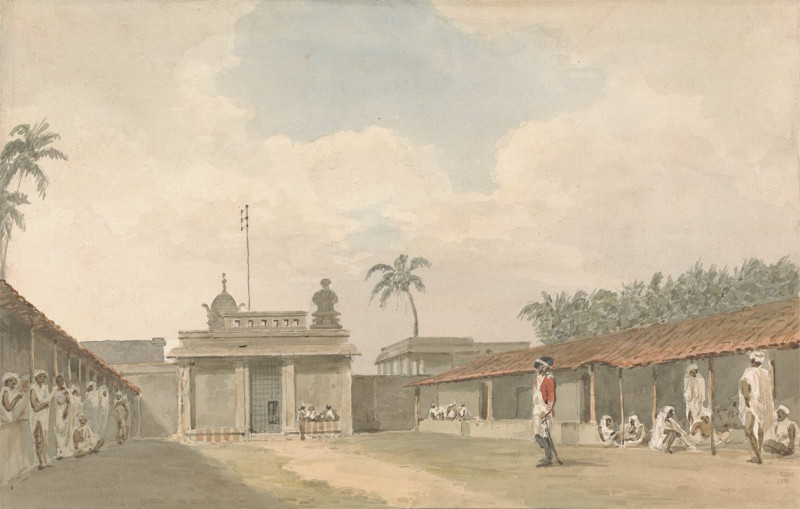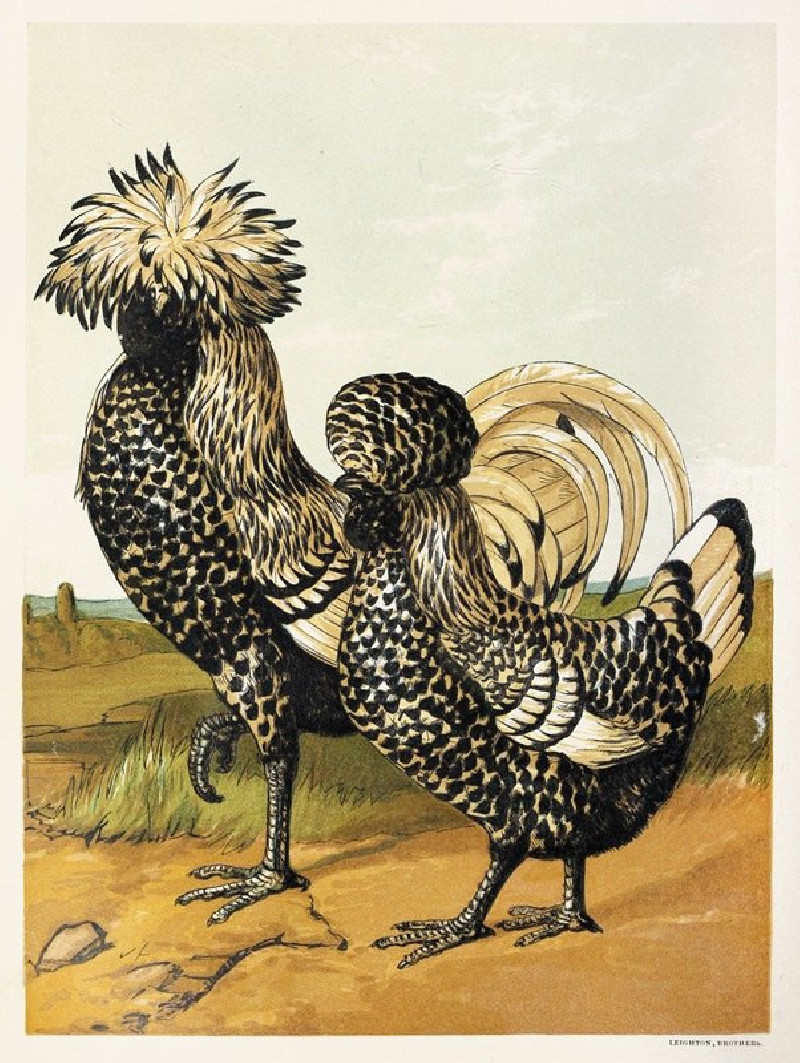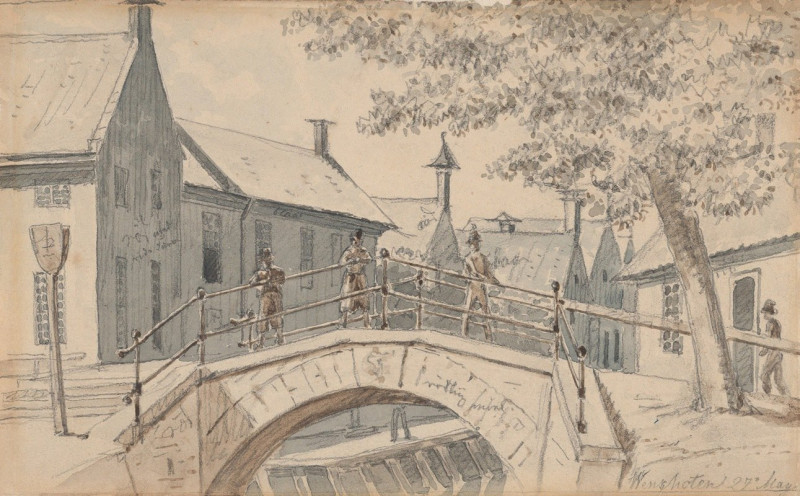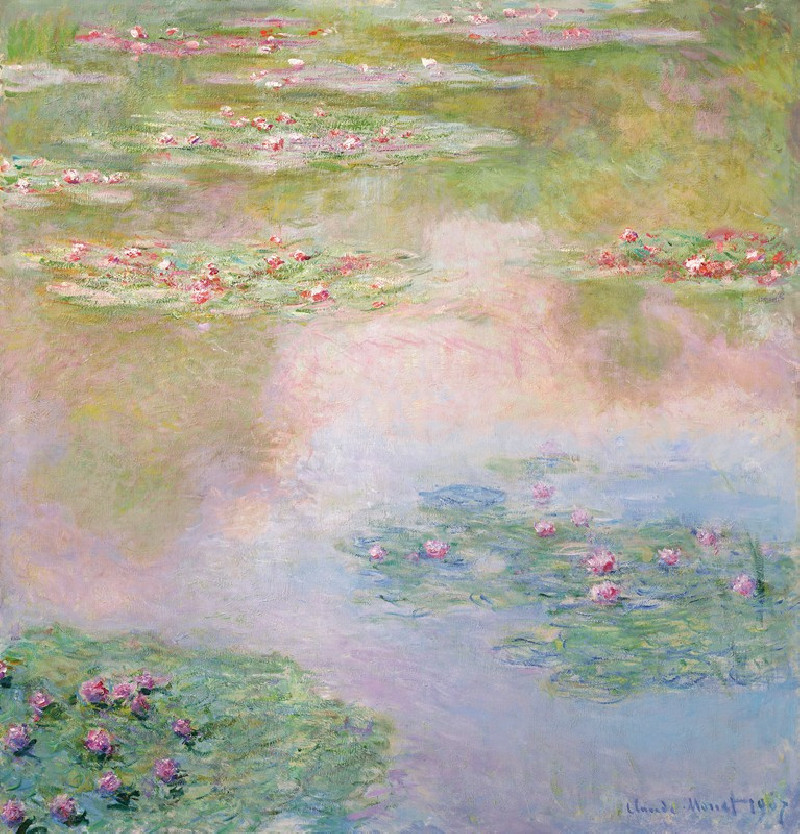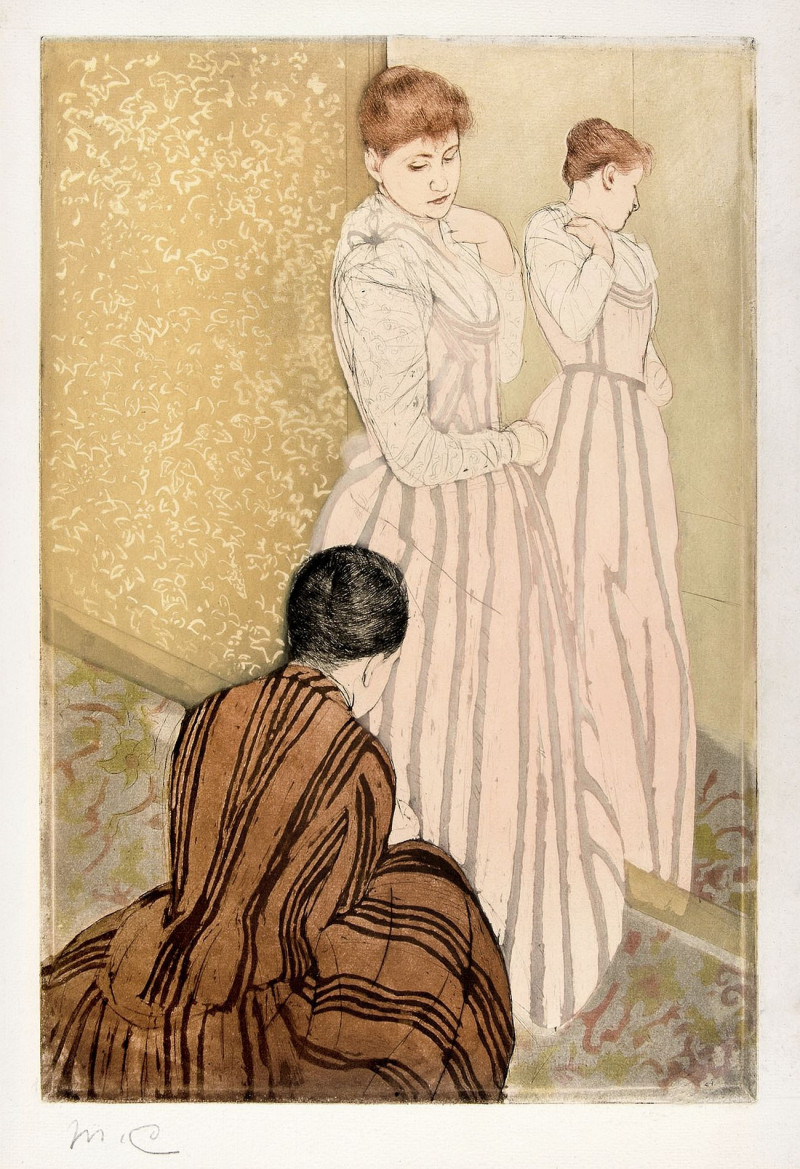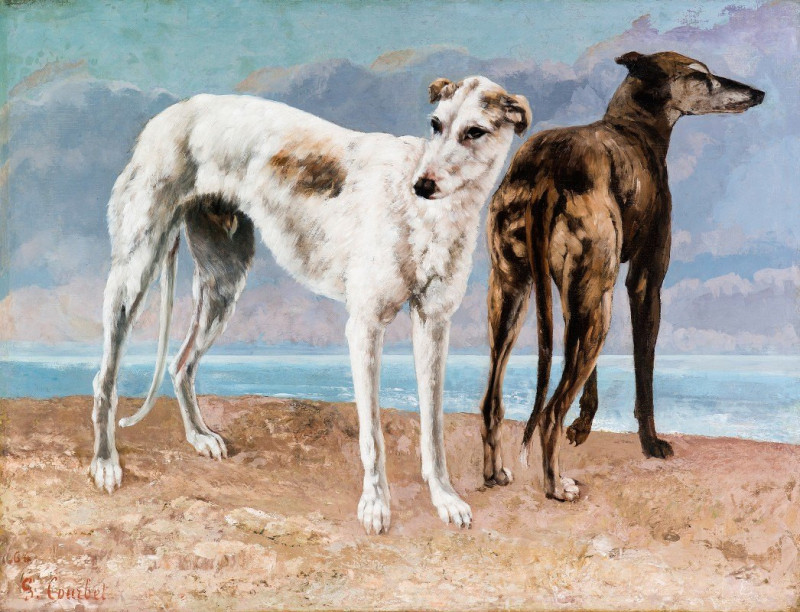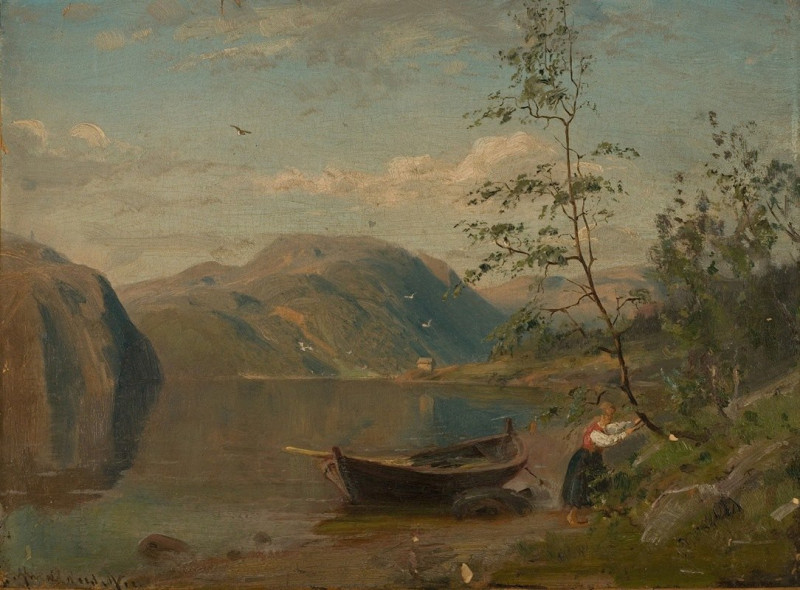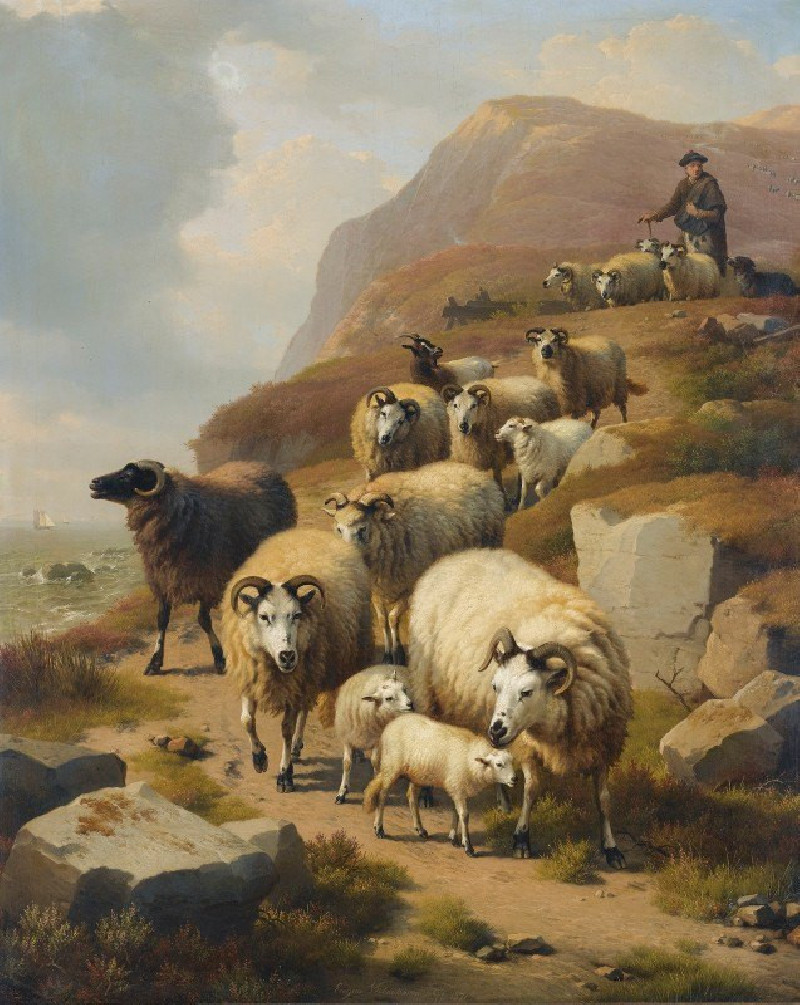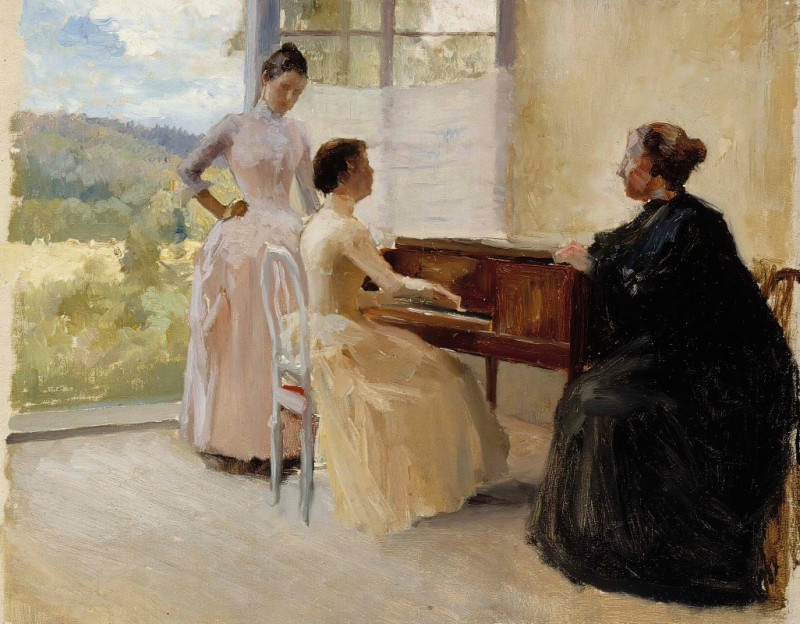Agostina (1866)
Technique: Giclée quality print
Recommended by our customers
More about this artwork
Jean-Baptiste-Camille Corot's painting "Agostina" from 1866 is a captivating work that showcases the artist's masterful blend of portrait and landscape painting. In this piece, Corot portrays Agostina Segatori, a model of Italian descent who was also a painter's muse, famously associated with several prominent artists of the time.Agostina is depicted standing against a muted background that hints at a rustic Italian landscape. Her posture is composed yet relaxed, resting her arm on a ledge, which adds a casual elegance to her demeanor. The attention to detail in her attire is striking—she wears a traditional costume rich with colors and textures. Her dress combines deep blues and vivid reds with delicate white lace, complemented by a floral patterned apron. Her neckline is adorned with multiple strings of red coral beads, which along with her dark braided hair, styled with a headband, accentuate her Mediterranean heritage.The background, while subdued, features faint outlines of buildings perched atop distant hills, suggestive of a small town or village. A barren tree beside her adds a touch of melancholy to the scene, contrasting with the vibrant character of Agostina herself.Corot, primarily known for his landscape paintings, brings his keen sense of atmosphere to this portrait. The overcast sky and the soft, diffused light lend the painting a quiet introspection, making Agostina's gaze particularly engaging. She looks out towards the viewer with a gentle, yet poignant expression, evoking a sense of timeless grace and strength."Agostina" is not just a display of Corot's skill in capturing the human figure but is also a vivid portrayal of character and place, offering a window into the rich cultural tapestry of 19th-century Italy.
Delivery
Returns
Jean-Baptiste-Camille Corot was a French landscape and portrait painter as well as a printmaker in etching. He is a pivotal figure in landscape painting and his vast output simultaneously references the Neo-Classical tradition and anticipates the plein-air innovations of Impressionism.


